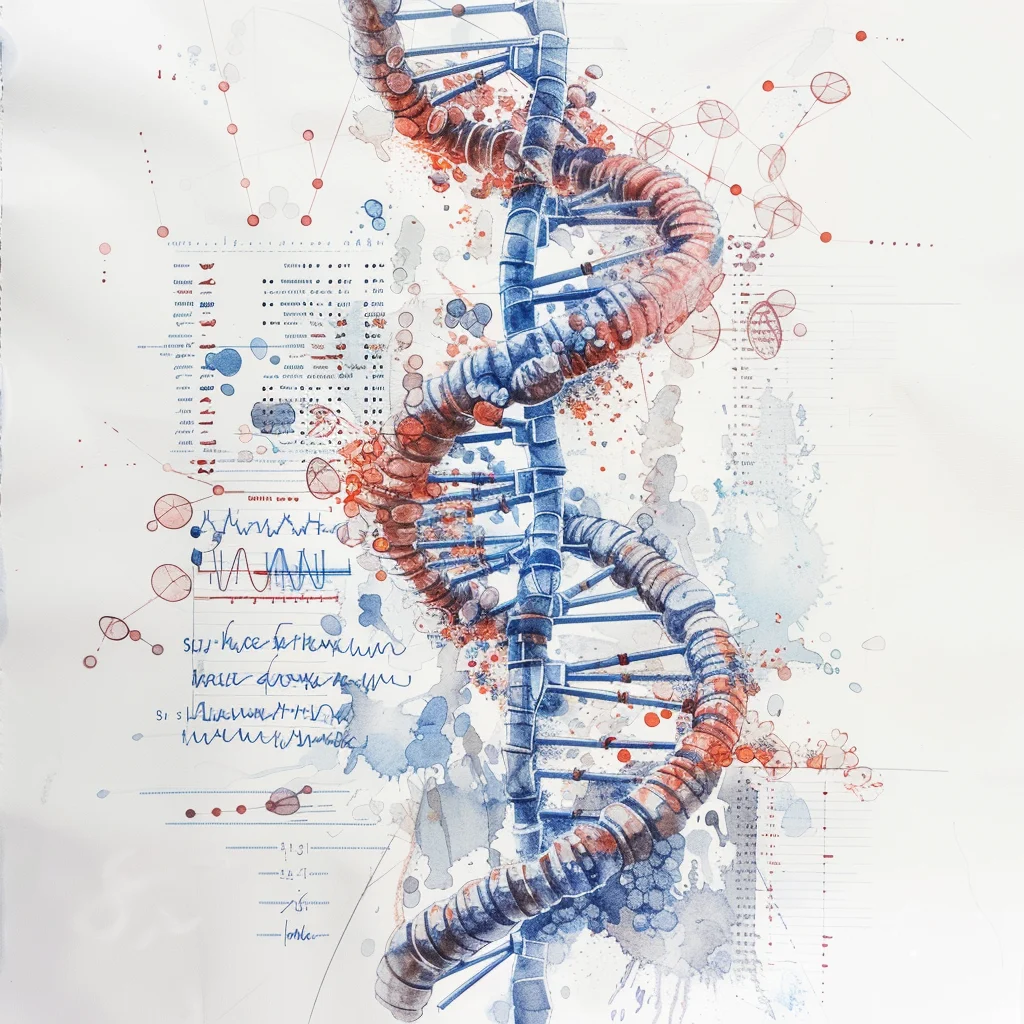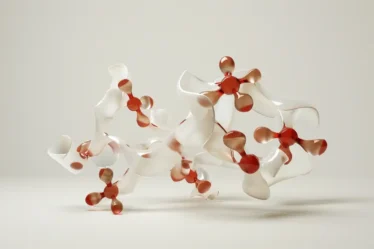
Epigenetics is the study of changes in gene expression that do not involve changes to the underlying DNA sequence.
These changes are brought about by various mechanisms that can turn genes on or off, effectively influencing how cells function and develop. Unlike genetic mutations, which alter the DNA sequence, epigenetic changes are reversible and can be influenced by environmental factors, lifestyle, and diet. Epigenetics is important in development, aging, and disease. It helps explain how identical twins can have different traits and how environmental factors can impact gene expression across generations.
If you’re looking to improve your study habits, our blog on how to learn efficiently has some great tips. We also discuss the pros and cons of online learning and provide an honest look at homeschooling benefits and challenges. You can find all these and more in our learning tips section.
Essentials of Epigenetics, Epigenome, and DNA methylation
Are you short on time? Here are the must-know aspects of epigenetics and epigenome:
🟠 Epigenetics: Study how gene expression changes without altering the DNA sequence, influenced by factors like environment and lifestyle.
🟠 Epigenome: The collection of all chemical modifications to DNA and histone proteins that regulate gene activity.
🟠 DNA Methylation: Adding methyl groups to DNA, often silencing genes and affecting gene expression.
What is Epigenetics?
Epigenetics is the study of how genes can be turned on or off without changing the actual DNA sequence. Think of it like a light switch for your genes. Various factors, such as diet, stress, and environmental exposures, influence this process. For example, identical twins have the same DNA but can develop different traits and health conditions because of epigenetic changes.
There are two main mechanisms: DNA methylation and histone modification. DNA methylation adds small chemical groups to DNA, which can silence genes. Histone modification changes the proteins that DNA wraps around, affecting how tightly DNA is wound and whether genes are accessible for activation.
These changes impact how cells function and develop and can even be passed down to future generations. Epigenetics helps us understand why some diseases run in families and how lifestyle choices can affect our health.
Main Epigenetic Mechanisms
Epigenetic mechanisms regulate gene expression without altering DNA sequences. Main mechanisms include DNA methylation, histone modification, and non-coding RNA interactions.
DNA Methylation
DNA methylation involves adding a methyl group to the DNA molecule, typically at cytosine bases in CpG islands. This chemical modification changes the activity of the DNA segment without changing its sequence. Enzymes called DNA methyltransferases (DNMTs) carry out this process. Methylation can be inherited through cell divisions and can also be reversed.
Effects of DNA Methylation on Gene Expression
Methylation typically suppresses gene expression by preventing the binding of transcription factors necessary for gene activation. When methyl groups are added to the promoter region of a gene, they block transcription machinery from accessing the DNA, thereby silencing the gene. This regulation is crucial for embryonic development, X-chromosome inactivation, and genomic imprinting.
Histone Modification
Histones are proteins around which DNA winds, forming nucleosomes. These histones can undergo various chemical modifications, including acetylation, methylation, phosphorylation, and ubiquitination. Each type of modification has a specific effect on chromatin structure and gene expression. For example, acetylation typically activates gene expression, while methylation can activate or repress genes, depending on the context.
Histone Modification in Gene Regulation
Histone modifications alter the accessibility of DNA to transcription machinery. Acetylation of histones by histone acetyltransferases (HATs) usually relaxes chromatin structure, making DNA more accessible for transcription. Conversely, histone deacetylases (HDACs) deacetylation condenses chromatin, repressing gene expression. Histone modifications send signals to other proteins, telling them to turn genes on or off. This process is really important for controlling how cells work and what they become.
Non-coding RNA in Epigenetics
Non-coding RNAs (ncRNAs) are RNA molecules that do not code for proteins but play vital roles in regulating gene expression. Types of ncRNAs include microRNAs (miRNAs), small interfering RNAs (siRNAs), and long non-coding RNAs (lncRNAs). These molecules influence gene expression at the transcriptional and post-transcriptional levels.
Non-coding RNA and the Epigenome
Non-coding RNAs can guide chromatin-modifying complexes to specific genomic locations, influencing DNA methylation and histone modification patterns. For example, lncRNAs can recruit DNMTs to specific genes, leading to their methylation and silencing. miRNAs can degrade mRNA or block its translation, effectively reducing the expression of target genes. These interactions are essential for fine-tuning gene expression and maintaining cellular functions.
Explore our simple chemical experiments you can do at home!
Exploring the Epigenome
The epigenome consists of all the chemical modifications to DNA and histone proteins that regulate gene expression. It controls how genes are turned on or off in different cell types and environments.
Components of the Epigenome
The epigenome includes various chemical modifications that occur on DNA and histone proteins. The key components are:
- DNA Methylation: The addition of methyl groups to DNA, primarily at CpG sites, affects gene activity.
- Histone Modifications: Chemical changes to histone proteins, such as acetylation, methylation, phosphorylation, and ubiquitination, impact chromatin structure and gene expression.
- Non-Coding RNAs: RNA molecules that do not code for proteins but regulate gene expression through interactions with DNA, RNA, and proteins.
These elements work together to control the structure of chromatin and regulate access to genetic information.
Differences Between the Epigenome and the Genome
The genome is the complete set of DNA in an organism, containing all the genetic instructions for building and maintaining that organism. In contrast, the epigenome comprises the chemical modifications that affect gene activity without changing the DNA sequence. While the genome is mainly static, the epigenome is dynamic and can change due to environmental factors, developmental cues, and lifestyle choices. This flexibility allows gene expression to be regulated in different tissues and stages of life.
Environmental Impact on the Epigenome
Environmental factors can significantly influence the epigenome, altering gene expression and potentially affecting health and development. Diet, stress, pollution, and chemical exposure can lead to epigenetic changes. For example, certain nutrients can donate methyl groups, influencing DNA methylation patterns. Stress can affect hormone levels, leading to histone modification and gene expression changes.
Examples of Environmental Impacts on the Epigenome
- Diet: Nutrients like folate and B vitamins are involved in methylation processes. A diet lacking these nutrients can result in hypomethylation, affecting gene expression linked to diseases.
- Stress: Chronic stress can lead to changes in DNA methylation and histone modifications, potentially altering the expression of genes involved in stress responses and increasing susceptibility to mental health disorders.
- Pollution: Exposure to pollutants like heavy metals or tobacco smoke can induce epigenetic changes, such as increased DNA methylation, leading to diseases like cancer and respiratory conditions.
Lewis structures are like the blueprints of molecules, and understanding polarity will make chemistry less mysterious.
Epigenetics and Human Health
Epigenetics in Development and Aging
Epigenetics is essential for proper development and aging. During development, epigenetic mechanisms like DNA methylation and histone modification regulate gene expression patterns, guiding cell differentiation and organ formation. These processes ensure that the right genes are active in the right cells at the right time, facilitating normal development. As we age, epigenetic changes accumulate, affecting gene expression and contributing to age-related diseases. For example, changes in DNA methylation and histone modification can impact cell growth and repair genes, influencing conditions like arthritis and osteoporosis.
Epigenetics and Disease
Epigenetic changes are linked to many diseases. In cancer, abnormal DNA methylation can silence genes that prevent tumor growth, while histone modifications can activate genes that promote cancer. This can lead to uncontrolled cell growth, a key feature of cancer. Epigenetic changes also contribute to cardiovascular diseases by affecting genes regulating heart health and diabetes by influencing insulin production. In neurological disorders, epigenetic alterations can impact brain function, contributing to conditions like schizophrenia and Alzheimer’s disease.
Genomic Instability and Cancer
Loss of DNA methylation can lead to genomic instability. When DNA methylation is reduced or lost, genes that should be silenced may become active, potentially leading to errors in DNA replication and repair. This instability can result in mutations and chromosomal abnormalities, often seen in cancer and other diseases. Additionally, changes in histone modifications can activate oncogenes, promoting cancer. These alterations can lead to uncontrolled cell growth and division, a hallmark of cancer development.
Epigenetics and Neurodegenerative Diseases
Epigenetic changes influence the onset and progression of neurodegenerative diseases like Alzheimer’s. Abnormal DNA methylation and histone modifications can affect genes involved in brain function and neuron survival genes. These changes can lead to the accumulation of toxic proteins and the death of neurons, contributing to symptoms and progression of diseases such as Alzheimer’s and Parkinson’s disease. Understanding these epigenetic changes can help develop new treatments and preventive strategies for these conditions.
Therapeutic Applications of Epigenetics
Epigenetic therapies are emerging as promising treatments for various diseases. These therapies aim to reverse abnormal epigenetic modifications to restore normal gene function. Key approaches include:
DNA Methyltransferase Inhibitors
These drugs can reactivate silenced tumor suppressor genes in cancer, helping to stop the growth of cancer cells.
Histone Deacetylase Inhibitors
These drugs can change gene expression to induce cancer cell death, making them useful in treating cancer.
Precision Medicine
This approach targets specific epigenetic changes to improve treatment outcomes and reduce side effects. By focusing on individual genetic and epigenetic profiles, precision medicine offers tailored treatments for patients.
Epigenetic therapies hold great potential for treating cancer, neurological, and inflammatory diseases. Researchers continue to identify new targets and develop effective treatments, aiming to use epigenetics to improve health outcomes across various conditions.
Mitosis is fascinating—seeing how cells divide is like watching a mini-miracle. And while you’re at it, explore topics like biodiversity and homeostasis to see how life stays balanced.
Tips for Learning About Epigenome and Epigenetics
We learned about how epigenetics affects gene expression without changing the DNA sequence. We saw how DNA methylation, histone modifications, and non-coding RNA interactions regulate gene activity, impacting development, aging, and diseases like cancer and Alzheimer’s. Understanding these mechanisms helps scientists develop new treatments and strategies for various health conditions. To dive deeper into epigenetics, consider getting a tutor or joining tutoring sessions.
If you’re looking for a biology tutor, try searching for “biology tutor Liverpool” or “biology teacher London” on a platform like meet’n’learn. This can help you find the perfect private teacher for your needs.
If you prefer learning in a group, search for “biology classes Leeds” or “biology lessons Birmingham” online. You’ll find options at community colleges or educational workshops.
FAQs on Epigenome, Epigenetics, and DNA methylation
1. What is epigenetics?
Epigenetics is the study of changes in gene expression that do not involve alterations to the DNA sequence.
2. How does DNA methylation affect gene expression?
DNA methylation can silence genes by adding methyl groups to DNA, preventing transcription.
3. What is the epigenome?
The epigenome consists of all the chemical modifications to DNA and histone proteins that regulate gene expression.
4. How do environmental factors influence the epigenome?
Environmental factors like diet, stress, and pollution can cause epigenetic changes that affect gene expression.
5. What is the role of non-coding RNA in epigenetics?
Non-coding RNA molecules help regulate gene expression by interacting with DNA, RNA, and proteins.
6. How does histone modification impact gene regulation?
Histone modifications can condense or relax chromatin structure, affecting gene accessibility and expression.
7. Can epigenetic changes be inherited?
Yes, some epigenetic changes can be passed from one generation to the next.
8. What are epigenetic therapies?
Epigenetic therapies aim to reverse abnormal epigenetic modifications to restore normal gene function, especially in diseases like cancer.
Are you curious about how different chemical compounds form? We’ve got all the details. Plus, if you’re feeling adventurous, learn how to make soap at home—it’s simpler than you might think!
References:
1. Learn Genetics
2. Nature
3. Wikipedia



